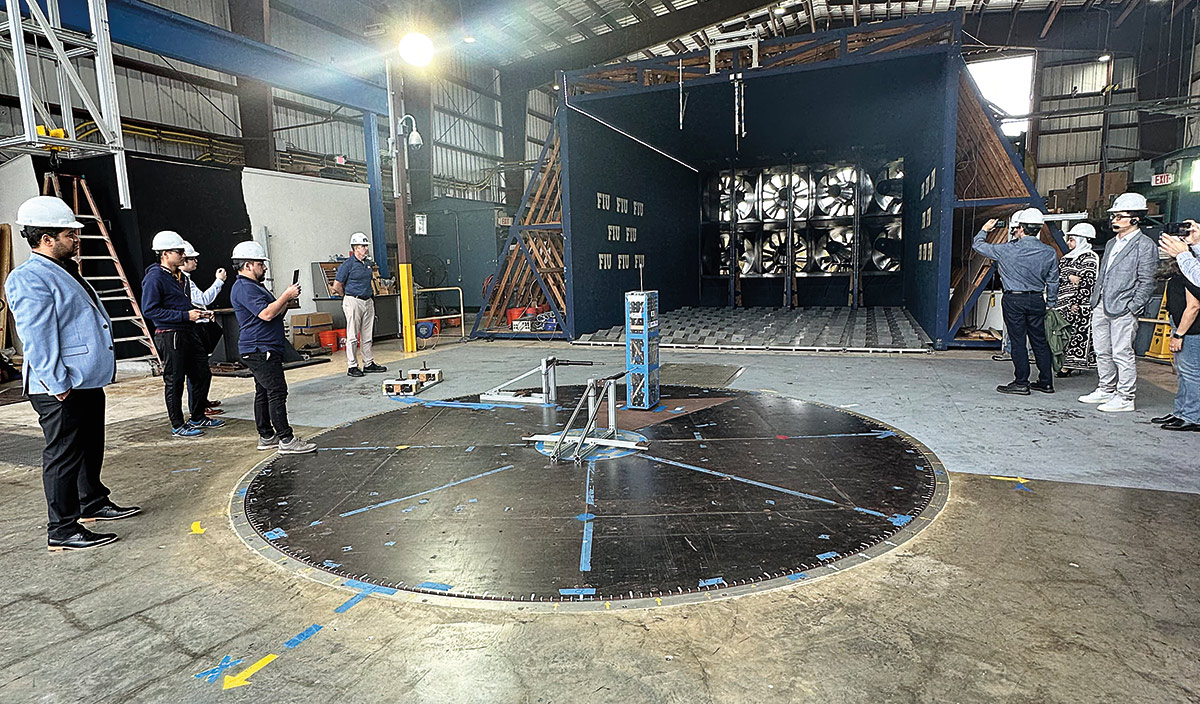
The workshop at FIU featured a demonstration of real-time aeroelastic hybrid simulation involving a 40-story building subjected to a storm with 170 mph winds.
The Lehigh Real-Time Multi-Directional Hybrid Simulation facility enables researchers to combine physical experiments with computer-based simulations to evaluate the performance of systems subjected to natural hazards—and develop strategies to improve resilience.
 In the past, the facility, which is located in Lehigh’s ATLSS Engineering Research Center and is part of the NSF-funded Natural Hazards Engineering Research Infrastructure (NHERI) network, has focused on earthquakes. In collaboration with Florida International University (FIU), Lehigh has migrated toward applying real-time hybrid simulations to wind natural hazards that occur under hurricane conditions.
In the past, the facility, which is located in Lehigh’s ATLSS Engineering Research Center and is part of the NSF-funded Natural Hazards Engineering Research Infrastructure (NHERI) network, has focused on earthquakes. In collaboration with Florida International University (FIU), Lehigh has migrated toward applying real-time hybrid simulations to wind natural hazards that occur under hurricane conditions.
“This is going to revolutionize wind-tunnel testing,” says James Ricles (pictured), the Bruce G. Johnston Professor of Structural Engineering, who leads the NHERI Lehigh Experimental Facility. “It’s impossible to bring a skyscraper into the laboratory, so we are linking a structural model in a computer with a physical aeroelastic model in the lab to capture fluid-structure interaction effects in a more accurate manner.”
Earlier this year, Lehigh researchers and members of FIU’s Wall of Wind facility and Multi-Hazard Engineering Collaboratory on Hybrid Simulation held a two-day workshop in Miami. The focus was on using real-time hybrid simulation to achieve a fuller picture of the impact of high winds on tall buildings. It included a 30-minute live demo of advancements in hybrid simulation to investigate and moderate wind-induced vibrations of a 40-story building. Lehigh participants included Ricles and research scientists Liang Cao and Thomas Marullo.
